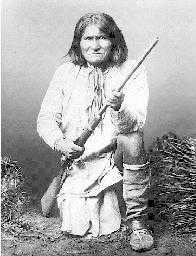How to pacify indigenous people
Leadership: The Wisdom of General CrookDuring the height of the Indian Wars in the American west, one of the most successful American commanders was general George Crook. He was an original thinker who used a combination of imagination and diplomacy to bring the wars to an end with a minimum of bloodshed. Crook's job was to pacify the tribes that still raided (as a form of sport or retribution for slights real or imagined) Indians and non-Indians alike. Crook also had to move tribes to reservations, or force them back there. But the main task of general Crook's troops was to keep the peace on a still turbulent frontier. Faced with the possibility of operating in Afghanistan, a rugged area populated by less well equipped, but more rugged and robust locals, it's a good idea to look back at how general Crook handled a similar situation.
First, general Crook saw diplomacy as his primary weapon. The Indians knew he had a more powerful military force, but they also knew Crook could be trusted. Crook used this trust, and his negotiating skills, to carry out American policies that he often didn't agree with. But Crook was also eager to avoid violence as much as possible. He was not a bloody minded soldier, and he realized that a reputation for senseless violence would make many of the tribes resist more stoutly and refuse to negotiate. Crook would recognize a similar situation in Afghanistan today. There is more to lose and little to gain by using a lot of fire power. You have to convince the Afghans that you do have the firepower, and can use it, but will only do so when there really is no other choice.


No comments:
Post a Comment
Note: Only a member of this blog may post a comment.